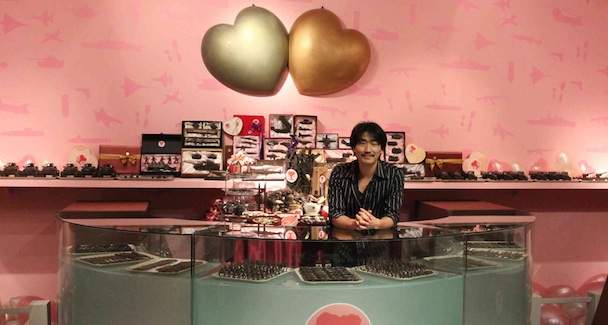Double Take
The new show from the Sydney art world equivalent of wide-eyed, out-and-out pop music.
Overview
This is the start of White Rabbit gallery's fourth year. Its directive is Chinese art produced since 2000. It's a private collection stuff that Kerr and Judith Neilson literally can't fit in their house. The tectonic cultural, political, and economic shifts in China have prompted a new renaissance of contemporary art. Hundreds of new museums open there every year, and cash-rich Beijing and Hong Kong dominate the global art market in volume of sales.
White Rabbit's latest show is called Double Take. A double take is a second glance, a delayed response to something that initially seems within easy comprehension. The works start with simple, singular premises that turn an assumed convention on its head. The show partly consists of a re-hang of previously exhibited works, taking the Double Take theme to another level. Despite the limited opening up, China remains repressive, and a gulf of inequality between the new generation of capitalists and the masses of poor is widening. As such, the themes of brutality and quiet violence hidden within many of the Double Take's works provide a counter-melody to their surface beauty.
To walk into Tu Wei-Cheng's room-sized installation Happy Valentine's Day (2011) a replica chocolate shop is to be greeted with the overwhelming aroma of cocoa butter and strawberry liquor. To look deeper is to realise that you are in a kind of saccharine war room: the confections are actually miniature tanks and militia men, posed to attack each other. The work is a comment on the increasingly militarised relations between China and Taiwan, and the artist installed it with a team of 14 assistants, something that gives you a sense of the scale that many Chinese artists are working on.
Shen Liang's This is a Book (2007) hijacks Cultural Revolution-era propaganda comics aimed at illiterate and semiliterate peasants, by reinterpreting them in a rough, painterly style, with almost imperceptible graffiti and visual subversions. It's accompanied by the original comics, so you can spot the difference between the vandalised and the authentic images.
Dai Hua's I Love Beijing's Tiananmen (2006) is an alternative history of the city, a pixel-art digital print in the style of ancient scroll. It contains an incredibly detailed, self-made language of rebellious symbols, the kind of language the Chinese government would otherwise censor. Look closely and you'll see a Microsoft pop-up dialogue box that asks, "Would you like to delete this file? Yes/No."
White Rabbit is the art world's equivalent of wide-eyed, out-and-out pop music. The kind of grown-up pop that Prince makes, that Madonna used to make. Their latest show has that holy grail of synchronous clarity and complexity that all contemporary artists search for it's broad and accessible without ever sacrificing intelligence and depth. Double Take is smart and political, inspiring and unsettling, all at once. We recommend taking a guided tour they're educational but not in a high school-ish way, because the White Rabbit staff are engaging, informed professionals who really know their stuff. And our last tip: There's a tiny library on the top floor where art geeks can spend a few hours pouring over beautiful, shiny art books, or join in on their Sunday book club.
Image: Artist Tu Wei-Cheng as proprietor of his chocolate shop in Happy Valentine's Day, 2011, mixed media.





